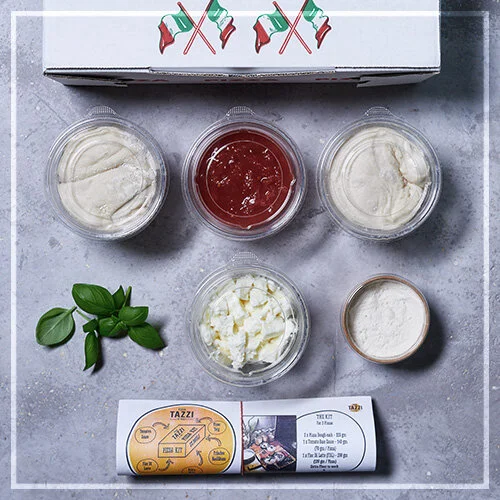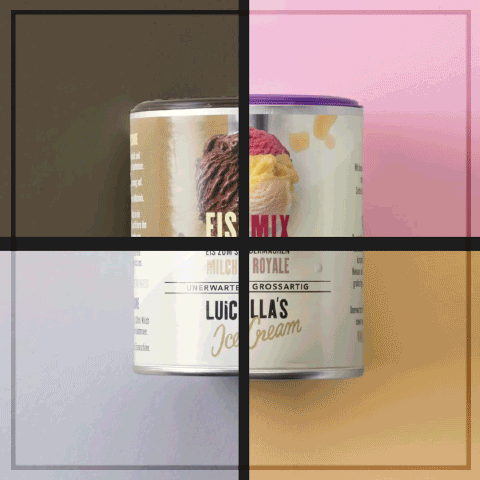.... WINEYards IN PORTUGAL - GUESTS AT THE QUINTA DONA .. MARIAWeingüter in Portugal – Zu Gast in der Quinta Dona Maria ....
....
Photos: Jan-Peter Westermann
Text: Regine Smith Thyme
..
Fotos: Jan-Peter Westermann
Text: Regine Smith Thyme
....
....
White houses with red-tiled roofs that are comparable to a throne or a mighty fortress. Estremoz, the White City, the marble city, in all its glory. Its colonnades and balconies, the gothic Palace present themselves as a gift. Our target: the Quinta Dona Maria, situated somewhere in the middle of everything...
..
Weiße Häuser mit roten Ziegeldächern – und über allem, wie auf einem Thron, eine mächtige Burganlage. Estremoz, die weiße Stadt, die Marmorstadt, in ganzer Pracht. Ihre Kolonnaden und Balkone, der gotische Palast – erst mal geschenkt. Unser Ziel, die Quinta Dona Maria, liegt irgendwo dort mittendrin…
....
....
With every step, we can hear the sand crunching underneath our feet, regardless of how gently Patrick and I place our feet on the ground. Water sprinklers synchronously rotate over the neatly trimmed lawns. We are quite a few meters away from the house. House? It is a building with an estimated length of about 70 meters, luscious vines are surrounding the dark green shutters. On both the left and right side of the stairs, two lovely terracotta amphoras are guarding the entrance. «The Quinta is more of a Palace than an “ordinary” winery. It’s actually not much of a surprise since King João V supposedly gifted the manor to his lover, the Lady-in-waiting, Dona Maria. A modest hut has subsided, though her name, Dona Maria, has remained.
For over 150 years, the wine has been made here, since 2003, according to different, even unpleasant transactions, they are the highly acclaimed wines of Júlio Bastos. To this day, he manages 80 acres of vineyards with some plants reaching the proud age of 60-years. He has just returned from a trip to Brazil, so we will meet him later.
..
Der Sand knirscht unter jedem unserer Schritte, egal, wie behutsam Patrick und ich auftreten. Wassersprenger drehen sich im Gleichtakt über die akurat gestutzten Rasenflächen. Es sind etliche Meter bis zum Haus. Haus? Es ist ein Gebäude von geschätzt etwa 70 m Länge, üppige Kletterpflanzen ranken sich um dunkelgrüne Fensterläden, links und rechts der Treppe bewachen zwei schmucke Terrakotta-Amphoren das Portal. Die Quinta ist eher ein Palast als ein »übliches« Weingut. Eigentlich nicht verwunderlich, denn König João V. soll einst den stattlichen Landsitz seiner Geliebten geschenkt haben, der Hofdame Dona Maria. Eine bescheidene Hütte ging da nicht. Ihr Name Dona Maria ist geblieben.
Seit über 150 Jahren wird hier Wein gemacht, seit 2003, nach verschiedenen, auch unerfreulichen Transaktionen, sind es wieder die hochgelobten Weine von Júlio Bastos. Heute bewirtschaftet er etwa 80 ha – Weingärten mit zum Teil 60 Jahre alten Gewächsen. Gerade ist er von einem Brasilientrip zurück, wir werden ihn später treffen.
....
....
Meanwhile, his wife is taking great care of us. We still have some time before dinner, so she points to the walled-in garden and laughs out loud. A little exercise? Why not? It is really hot out there, but we could use it after all the hours we spent in the car...
Pillars and cherubs decorate the pompous passage to the garden- a light stroll, no exercise! A gazebo, a pond with a waterfall and Neptune holding a Trident, surrounded by nymphs and sea monsters.The shady paths are a relief, as the warm air dries the shirts on our backs. As Senhora Bastos points to the ailing Palm trees, she has tears in her eyes: she was completely powerless against the red palm weevils.
..
Seine Frau kümmert sich derweil rührend um uns. Bis zum Essen ist noch Zeit, deshalb deutet sie zum ummauerten Garten hinüber und lacht. Ein bisschen Bewegung? Why not?! Eigentlich ist es draußen ganz schön heiß, aber nach all den Stunden im Auto…
Säulen und Putten schmücken den pompösen Durchgang zum Garten – lustwandeln, nicht spazierengehen! Eine Laube, ein Teich mit Wasserfall und Neptun mit Dreizack, Nymphen und Seeungeheuer. Die schattigen Wege sind eine Wohltat, die Luft trocknet das Hemd am Rücken. Als Senhora Bastos auf die maroden Palmen zeigt, hat sie Tränen in den Augen: Gegen den Roten Palmrüssler war auch sie vollkommen machtlos.
....
....
Time to eat. We wander back slowly, no hurry. What can we expect inside? We enter a magnificent ambiance with old paintings and mostly antique furniture. The walls are decorated with precious blue and white tiles, called Portuguese azulejos. It is like the family is living in a museum, minus the dust. It's living history – a relaxed lifestyle à la Bastos. There are four of us at the table: in addition to the Lady of the House, Patrick and me, the oenologist Sandra Gonçalvestook is joining us. For over ten years she has been working with Julio Bastos. She tells us stories about how they both restored and expanded the old winery, fitted the basement with the latest technology and yet preserved the 140-year-old Lagares. In those ancient fermentation tanks, grapes are even to this day, crushed with naked (clean) feet. For hours on end...
..
Essenszeit. Wir gehen zurück, gemächlich, keine Hast. Was wird uns drinnen wohl erwarten? Wir betreten ein prachtvolles Ambiente mit alten Gemälden und überwiegend antikem Mobiliar. Die Wände sind mit kostbaren blauweißen Fliesen, portugiesischen Azulejos, geschmückt. Die Familie wohnt hier wie in einem Museum, das aber so gar nichts Museales, Verstaubtes hat. Es ist gelebte Geschichte – entspannter Lifestyle à la Bastos. Am Tisch sind wir dann zu Viert: Neben der Hausherrin, Patrick und mir hat auch die Önologin Sandra Gonçalves Platz genommen – seit über zehn Jahren arbeitet sie mit Julio Bastos zusammen. Sie erzählt, wie sie Beide das alte Weingut restaurierten und erweiterten, den Keller mit modernster Technik ausstatteten – und dabei die über 140 Jahre alten lagares erhielten. In diesen uralten Vergärungsbecken werden Trauben nach wie vor mit nackten (sauberen) Füßen getreten. Stundenlang…
....
....
After the wonderful vegetable soup, the meat is served. It was cooked for a long time at a low temperature in a copper boiler so that it melts on the tongue and a knife really is superfluous. Two domestic workers discreetly provide us with more food, without us even noticing. Once we are fed and given coffee, the Master of the House arrives: Senhor Bastos immediately makes a good impression on us. After the meal, our (perceived) one thousand steps lead us to the chapel. Yes, the Lady of the House could even call a church her own. This church, as we learned, was built in 1752, therefore only a few years after the main building, and it was dedicated to our Lady on Mount Carmel.
The Master of the House decides that it is time for wine, so we head back and are offered one of his noble drops in the classy living room. He proudly talks about working on the vineyards and the different types of grapes he cultivates. The red ones are especially “Alicante Bouchet”, entirely red and fruity berries with “Touriga Nacional”, an autochthonous variety, which primarily grows in the Douro Valley and also makes for a good port wine. He also produces Cabernet Sauvignon, Syrah, Petit Verdot and Aragonês; the white and autochthonous varieties are Viognier and Arinto and Viosinho andantino Vaz. Bastos explains that sometimes, he produces wine in clay amphoras, as some sort of a hobby and experiment. We couldn’t be further away from any ordinary and dull routine.
..
Nach der herrlich gemüsigen Suppe wird ein kräftiger Rinderbraten serviert. Es wurde so lange bei niedriger Temperatur im Kupferkessel gegart, dass es auf der Zunge »schmilzt« und echt kein Messer mehr braucht. Zwei Hausangestellte sorgen für Nachschub – und das so diskret, dass wir es lange überhaupt nicht bemerken. Als wir dann pappsatt und wohlig beim Kaffee sind, trifft der Hausherr ein: Senhor Bastos ist uns auf Anhieb sehr sympathisch. Unsere (gefühlten) tausend Schritte nach dem Mahl führen uns zur Kapelle. Ja, die Hofdame konnte sogar eine eigene Kirche ihr Eigen nennen. Diese, so erfahren wir, wurde 1752 errichtet, also ein paar Jahre nach dem Hauptgebäude, und Unserer Lieben Frau auf dem Berge Karmel geweiht.
Zeit zum Weintrinken, bestimmt der Hausherr, macht kehrt und kredenzt uns seine Toptropfen in hochherrschaftlicher Kulisse im Salon. Mit gelassenem Stolz erzählt er von der Arbeit und seinen Rebsorten im Weinberg: Bei den roten sind es besonders Alicante Bouschet mit komplett rotfleischigen Beeren und Touriga Nacional, eine autochthone Sorte, die hauptsächlich im Dourotal wächst und auch einen guten Port abgibt. Außerdem werden noch Cabernet Sauvignon, Syrah, Petit Verdot und Aragonês gelesen; bei den weißen Rebsorten sind es Viognier und Arinto sowie die autochthonen Sorten Viosinho und Antão Vaz. Manchmal, so Bastos, baut er Wein sogar in Tonamphoren aus, als Spielerei und um zu experimentieren. Von öder Routine ist man hier ohnehin weit entfernt.
....
....
The time flew by fast, due to all the great food, greatwine and great conversations. Now we won’t pass on Estremoz and we decide to stay the night in the castle, that is home to one of the best Pousadas in the country. Boa Noite!
..
Es ist spät geworden nach so viel gutem Essen, gutem Wein, guten Gesprächen. Nun werden wir Estremoz nicht mehr links liegen lassen und in der Burg übernachten, denn schließlich beherbergt sie eine der besten Pousadas des Landes. Boa noite!
....
Dona Maria Vinhos
Quinta do Carmo
7100 Estremoz
Portugal
Telefon: +351 268 339 150


















